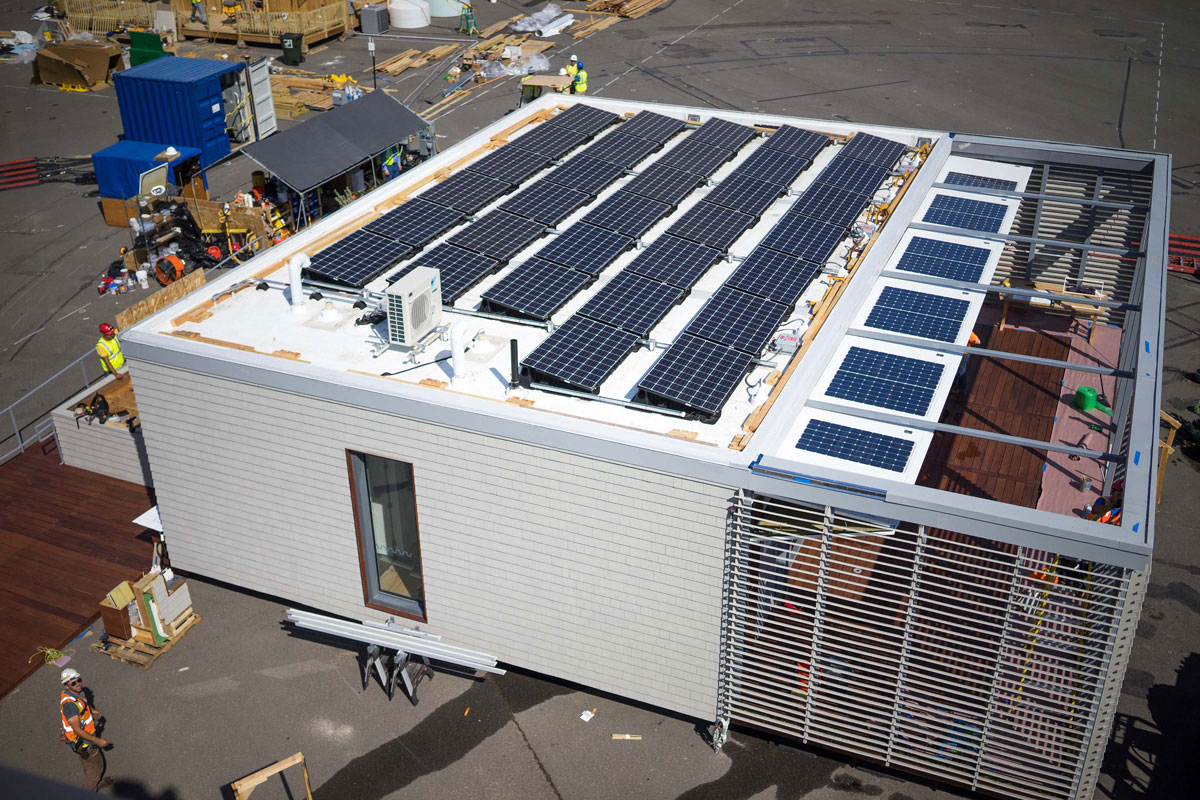Solar Decathlon-winning home integrates Secure Power Supply for standby needs

The long journey from Hoboken, New Jersey to Irvine, California was worth the effort for Stevens Institute of Technology’s SURE HOUSE, which won the 2015 Solar Decathlon hosted by the U.S. Department of Energy. SURE,

Sunny Boy TL-US inverters share a utility room with the solar hot water systems inside the SURE HOUSE.
” alt=”Sunny Boy TL-US by Steven’s Institute” width=”221″ height=”332″ /> Sunny Boy TL-US inverters share a utility room with the solar hot water systems inside the SURE HOUSE.[/caption]
standing for Sustainable plus Resilient, represents the team’s vision for a post-Hurricane Sandy Jersey Shore home. The house uses 90 percent less energy than the average New Jersey home by implementing the passive house building standard.
The Solar Decathlon’s 2015 competition did not allow the use of batteries for energy storage, so the team engineered the home’s solar array with SMA Sunny Boy TL-US inverters that produce on-demand standby power in the event of a utility outage, achieving their resiliency goals. Designed and built with innovative stormproof construction features developed from the marine industry, the home blends function and fashion into a model of future design capabilities.
Storm-strong solar
The student team dimensioned, modeled, and installed the array, with the advisement and supervision of industry faculty and electrical professionals. The system design called for one Sunny Boy 3000TL-US and one Sunny Boy 5000TL-US, both with Secure Power Supply functionality. The Stevens team then used 34 LG MonoX 280-watt modules to generate power from the sun. The system also prototyped transfer switch circuitry, detecting utility power
phase loss and enabling two of the home’s branch circuits to be safely switched from the main panelboard to the Sunny Boys’ Secure Power Supply.
One of these circuits is an induction charging hub and convenience outlet located in the kitchen, and the other circuit is a marine-grade USB charging station on the exterior entrance of the home. The design concept was driven by events the Stevens team witnessed during utility outages from Superstorm Sandy; a notion that residents and neighbors without utility power could charge communications devices from islanded power, rather than an internal combustion engine generator.
Total power control
The solar system is sized to not only offset 100 percent of the home’s annual estimated energy needs but also charge an electric vehicle for 12,500 miles of annual driving (assuming 4.1 miles/kWh efficiency).
Additionally, the home’s hot water system utilizes a unique DC heating element connected to an islanded, building-integrated solar array to heat domestic hot water. This allowed the team to size the hot water system more effectively for the hot summer and cold winters than a traditional solar thermal system, while also enabling them to continue to heat water in the event of a utility outage.
Totaling 8.96kW of grid-tied PV and 1.8kW for the solar hot water, the system will generate an annual 12,175 kWh of energy for the modern, stylish home. Congratulations to everyone from the SURE HOUSE team and Stevens Institute of Technology on their victory and tremendous design.






Feel free to contribute!